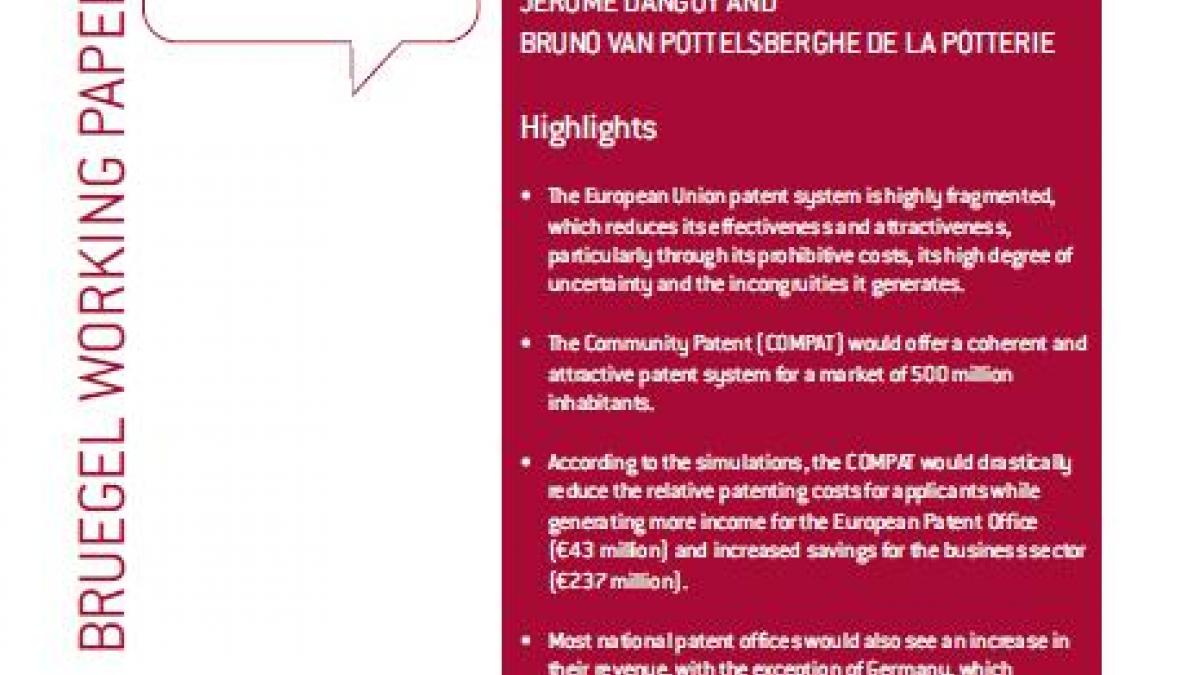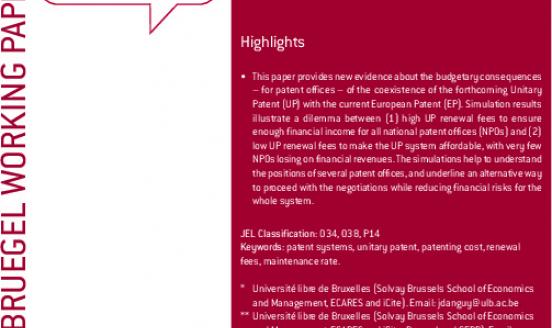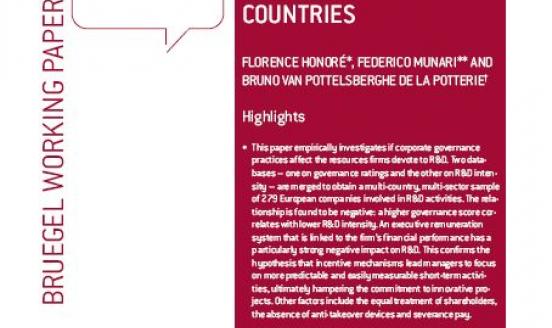Cost Benefit Analysis of the Community Patent

The creation of a European Community Patent (COMPAT) came a step closer this month when Sweden brokered a preliminary agreement on the issue. In this working paper, Senior Resident Fellow Bruno van Pottelsberghe and Jérôme Danguy use simulations to take a look at the advantages, disadvantages, winners and losers from the creation of the COMPAT. They find that it would drastically reduce the relative patenting costs for applicants while generating more income for the European Patent Office and increased savings for the business sector. They also explain that the lost of economic rents for patent attorneys, translators and lawyers specialised in patent litigation and the drop of controlling power for national patent offices may explain why there has been such resistance to the COMPAT thus far.

